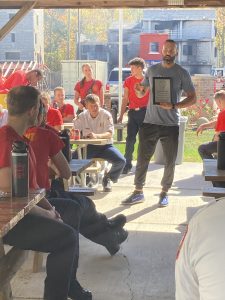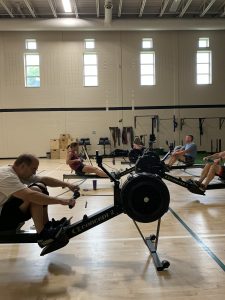“I don’t know how else to say it, but this is a community celebration,” County Manager John A. Vithoulkas said in welcoming the estimated 400 guests at the Henrico Sports & Events Center on November 16. “Today is a celebration of the work efforts of our staff, of exceptional public service and all of this is … is driven by the policies and the goals and the aspirations of our Board of Supervisors.”
 After a musical introduction by the Henrico High School marching band, the County Manager thanked the current Board of Supervisors for their hard work, with special mention to Patricia O’Bannon and Frank Thornton, who are both retiring after 28 years on the Board. He also thanked Tommy Brannon for his eight years on the Board and welcomed the recently elected members: Jody Rogish (Tuckahoe), Roscoe Cooper (Fairfield), and Misty Whitehead (Three Chopt).
After a musical introduction by the Henrico High School marching band, the County Manager thanked the current Board of Supervisors for their hard work, with special mention to Patricia O’Bannon and Frank Thornton, who are both retiring after 28 years on the Board. He also thanked Tommy Brannon for his eight years on the Board and welcomed the recently elected members: Jody Rogish (Tuckahoe), Roscoe Cooper (Fairfield), and Misty Whitehead (Three Chopt).
Along with the different setting of this year’s event in the brand-new sports arena, there was also a new format. Instead of the County Manager speaking for the duration, he introduced the first of seven speakers– all department heads or other County officials, each highlighting accomplishments in key service areas: education, finance, economic development, tourism, infrastructure, housing, sustainability, and public safety.
First, Dr. Amy Cashwell, Superintendent of Henrico County Public Schools (HCPS), introduced the new school board and spoke of the top five things we need to know about HCPS:
-
- Henrico Schools is a sound return on investments
-
- We are dedicated to safety and wellness
-
- HCPS is a great place to work
Second, Brandon Hinton, Deputy County Manager of Administration, took the podium and spoke of the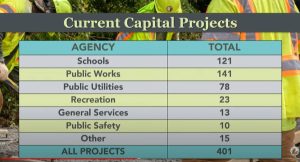 current 401 capital projects, including the rebuilding and renovating of several elementary schools and the construction of a living Environmental Education building at Wilton Farm, 141 public works projects, the new Police Station that just broke ground in their South district, and Firehouse 23 that is currently under construction. He then gave a shout-out to Sheila Minor and Justin Crawford for creating a 20.1% growth rate in the annually compounded General Fund Balance since July 2020. He attributed the County’s success to steadfast and consistent leadership, incredible employees, businesses that have made Henrico home, and the secret ingredient: how we manage our finances. By investing in flexibility, we can manage economic downturns without raising taxes or employee layoffs. Instead, Henrico has invested in its employees, allowing them to receive, on average, a 32% increase in salary in the past two and a half years. Smart money management also permitted Henrico to provide tax relief to residents and to be the first locality in the state to take advantage of new state laws and give surplus real estate and personal property taxes back to taxpayers. Henrico also cut the already-lowest personal property tax by an additional ten cents. Brandon closed by discussing the RECap Program that will provide real estate tax relief for the qualifying Henrico property owners.
current 401 capital projects, including the rebuilding and renovating of several elementary schools and the construction of a living Environmental Education building at Wilton Farm, 141 public works projects, the new Police Station that just broke ground in their South district, and Firehouse 23 that is currently under construction. He then gave a shout-out to Sheila Minor and Justin Crawford for creating a 20.1% growth rate in the annually compounded General Fund Balance since July 2020. He attributed the County’s success to steadfast and consistent leadership, incredible employees, businesses that have made Henrico home, and the secret ingredient: how we manage our finances. By investing in flexibility, we can manage economic downturns without raising taxes or employee layoffs. Instead, Henrico has invested in its employees, allowing them to receive, on average, a 32% increase in salary in the past two and a half years. Smart money management also permitted Henrico to provide tax relief to residents and to be the first locality in the state to take advantage of new state laws and give surplus real estate and personal property taxes back to taxpayers. Henrico also cut the already-lowest personal property tax by an additional ten cents. Brandon closed by discussing the RECap Program that will provide real estate tax relief for the qualifying Henrico property owners.
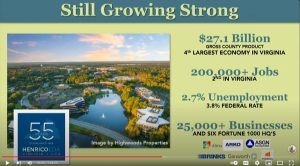 Anthony Romanello, Executive Director of the Economic Development Authority, was next on the mic and opened by stating that the County’s finances are so strong because its economy is so strong. In fact, it is the fourth strongest economy in the state and second for jobs. This is made possible by public-private partnerships and $2.5 billion in private investments such as Amazon. Richmond International Airport in Henrico being named the most efficient airport in North America also helps! Henrico isn’t just about the billions in investments but also the people and working with businesses of all sizes. The Small Business Development Center helped 225 businesses in the last year. Anthony closed out by discussing future projects such as the Willow Lawn remodel and Green City.
Anthony Romanello, Executive Director of the Economic Development Authority, was next on the mic and opened by stating that the County’s finances are so strong because its economy is so strong. In fact, it is the fourth strongest economy in the state and second for jobs. This is made possible by public-private partnerships and $2.5 billion in private investments such as Amazon. Richmond International Airport in Henrico being named the most efficient airport in North America also helps! Henrico isn’t just about the billions in investments but also the people and working with businesses of all sizes. The Small Business Development Center helped 225 businesses in the last year. Anthony closed out by discussing future projects such as the Willow Lawn remodel and Green City.
Dennis Bickmeier, Executive Director of the Henrico Sports and Entertainment Authority, was next up to speak and rallied the crowd with his motto of “Showtime all the time.” He went on to discuss how the new Henrico Sports and Event Center, where the meeting was held, was a huge multi-department collaboration between Recreation and Parks’ capital projects team, IT, Finance, Public Works, Public Relations, General Services, and legal. “…This Center’s production systems were designed in-house by Mike Stoeckle [with Public Relations]. This gives us television and event production capabilities that rival those of major Arenas around the country… Travis Sparrow, Brian Viscuso, and the IT team did extensive work to enhance the guest experience and overall technology capabilities in this building. By tapping the expertise of the county staff, we saved this project over a million dollars.” Dennis excitedly shared that 46 weekends of events have already been scheduled for 2024!
Looking to Henrico Parks, Dennis was proud to share the completion of the Dorey Park water park, and Deep Run Rec Center expansion, and that program participation has returned to pre-pandemic levels. Next summer, we can all look forward to the opening of Taylor Park, a 99-acre park with trails, a skate park, and a fallen heroes memorial. Pouncy Tract Park is also adding pickleball courts, and Glover Park is expanding to add a second entrance, trails, a dog park, and more multi-purpose fields. Its new baseball stadium will complement Glenn Allen Stadium and Dory Stadium, allowing Henrico to boast a Triad of stadiums, unlike any other locality in the country.
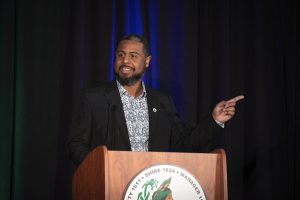 Dennis then passed the ball to Terrell Hughes, Director of Public Works, to discuss infrastructure efforts to improve quality of life and secure a long-term future for residents. He started with the Fall Line project that broke ground in October and will add 14 miles of bike lanes and connect to the Capital Trail. There are also 120 transportation projects in the works, most of which are adding sidewalks and pedestrian safety. Through the partnership with the Greater Richmond Transit Commission (GRTC), there are projects to expand bus routes and add bus stop enhancements. Along with transportation, water and internet have been big priorities, especially in the more rural parts of the County. Henrico has been proactively replacing underground sewer and water lines, connected 30 houses to County water that were previously on wells, and soon 100% of County residents will have broadband access. There have been multiple drainage and Wastewater facility improvements. The Westwood pump station is being designed, water and sewer is expanding to southeast Henrico, and the Cobbs Creek Reservoir is nearly completed, which will secure the County’s drinking water for the next 50 years. As far as road projects go, several rural roads have been expanded, and roundabouts have been added throughout the County. Next year, the County can look forward to the building of the Magellan Parkways and a new bridge over I95, Saddler Road widening, utility work at Three Chopt Road, and I64 Highway improvements near Short Pump.
Dennis then passed the ball to Terrell Hughes, Director of Public Works, to discuss infrastructure efforts to improve quality of life and secure a long-term future for residents. He started with the Fall Line project that broke ground in October and will add 14 miles of bike lanes and connect to the Capital Trail. There are also 120 transportation projects in the works, most of which are adding sidewalks and pedestrian safety. Through the partnership with the Greater Richmond Transit Commission (GRTC), there are projects to expand bus routes and add bus stop enhancements. Along with transportation, water and internet have been big priorities, especially in the more rural parts of the County. Henrico has been proactively replacing underground sewer and water lines, connected 30 houses to County water that were previously on wells, and soon 100% of County residents will have broadband access. There have been multiple drainage and Wastewater facility improvements. The Westwood pump station is being designed, water and sewer is expanding to southeast Henrico, and the Cobbs Creek Reservoir is nearly completed, which will secure the County’s drinking water for the next 50 years. As far as road projects go, several rural roads have been expanded, and roundabouts have been added throughout the County. Next year, the County can look forward to the building of the Magellan Parkways and a new bridge over I95, Saddler Road widening, utility work at Three Chopt Road, and I64 Highway improvements near Short Pump.
Next, Eric Leabough, Director of Community Revitalization, took the stage to discuss housing. There has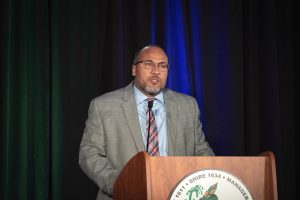 been an uptick in the number of people living out of hotels, couch surfing, or unsheltered. To combat the lack of supply of homes, Henrico is constructing Cool Lane Commons, an 86-unit apartment building for people without housing; helped Housing Families First expand their family shelter; and cultivating partnerships to provide greater levels of housing affordability, including five current memorandums of understanding (MOUs) which represents about 1,000 units. Creating the Hotel to Home program has helped people living in hotels move into permanent housing. This initiative came from the hotel task force, which involved working with the Police Division, the Division of Fire, Mental Health and Developmental Services, Building Inspections, the Health Department, the County Attorney’s Office, and the Commonwealth’s Attorney’s Office. Joe Emerson and the planning team have created tools, zoning ordinances, and a fast-track approval process to help the building process. Henrico also partnered with the broader development community to bring units online faster and on a larger scale to meet the growing affordable housing needs such as Arcadia and River East. It isn’t just about providing housing, but also the maintenance and upkeep of current housing. There are partnerships through Project Homes and Richmond Habitat that, on average, support 70 homeowners annually. Community Revitalization and Building Inspections partnered to assist the residents of Glenwood Farms in improving their conditions. Affordability has been another major issue when it comes to housing. Considering this, Henrico is rolling out the Employee Home Purchase Assistance Program (EHPAP) to provide down-payment and closing cost assistance to employees purchasing their first home in Henrico County.
been an uptick in the number of people living out of hotels, couch surfing, or unsheltered. To combat the lack of supply of homes, Henrico is constructing Cool Lane Commons, an 86-unit apartment building for people without housing; helped Housing Families First expand their family shelter; and cultivating partnerships to provide greater levels of housing affordability, including five current memorandums of understanding (MOUs) which represents about 1,000 units. Creating the Hotel to Home program has helped people living in hotels move into permanent housing. This initiative came from the hotel task force, which involved working with the Police Division, the Division of Fire, Mental Health and Developmental Services, Building Inspections, the Health Department, the County Attorney’s Office, and the Commonwealth’s Attorney’s Office. Joe Emerson and the planning team have created tools, zoning ordinances, and a fast-track approval process to help the building process. Henrico also partnered with the broader development community to bring units online faster and on a larger scale to meet the growing affordable housing needs such as Arcadia and River East. It isn’t just about providing housing, but also the maintenance and upkeep of current housing. There are partnerships through Project Homes and Richmond Habitat that, on average, support 70 homeowners annually. Community Revitalization and Building Inspections partnered to assist the residents of Glenwood Farms in improving their conditions. Affordability has been another major issue when it comes to housing. Considering this, Henrico is rolling out the Employee Home Purchase Assistance Program (EHPAP) to provide down-payment and closing cost assistance to employees purchasing their first home in Henrico County.
After a short video on Henrico’s sustainability efforts featuring the 90,000 new recycling carts, tripled solar production, the launch of Henrico’s Environmental Action Resource Team (HEART), and reforesting, the Chief of Staff, Cari Tretina, took the stage as the  final presenter. She discussed the Encore program created by Yvette George, Director of Human Resources, that allows retirees to come back to work part-time. The program has seen success in the Division of Fire and with the newly created Emergency Communications Division, which increased staffing by 38%. The introduction of eight weeks of parental leave is also an added benefit for employees. Cari went on to say, “We need great employees in public safety because Henrico isn’t immune to the challenges we face as a nation. Gun violence, particularly involving our youth, has dramatically increased, and so have our struggles with mental health, our Justice and medical systems are stressed like never before, but as a county, we’re meeting the challenges with teamwork and swift action.” By the end of 2023, officers removed more than 900 guns from the street. Multi-agency teams of first responders and human services professionals, such as the Star Team, the Care Team, and the Crisis Response Teams, have been instrumental in getting residents the care they need. The Mental Health Docket, which diverts individuals from jail to get treatment, has seen a 96% graduation rate, meaning the individual got a job and the treatment they needed and was reunited with family.
final presenter. She discussed the Encore program created by Yvette George, Director of Human Resources, that allows retirees to come back to work part-time. The program has seen success in the Division of Fire and with the newly created Emergency Communications Division, which increased staffing by 38%. The introduction of eight weeks of parental leave is also an added benefit for employees. Cari went on to say, “We need great employees in public safety because Henrico isn’t immune to the challenges we face as a nation. Gun violence, particularly involving our youth, has dramatically increased, and so have our struggles with mental health, our Justice and medical systems are stressed like never before, but as a county, we’re meeting the challenges with teamwork and swift action.” By the end of 2023, officers removed more than 900 guns from the street. Multi-agency teams of first responders and human services professionals, such as the Star Team, the Care Team, and the Crisis Response Teams, have been instrumental in getting residents the care they need. The Mental Health Docket, which diverts individuals from jail to get treatment, has seen a 96% graduation rate, meaning the individual got a job and the treatment they needed and was reunited with family.
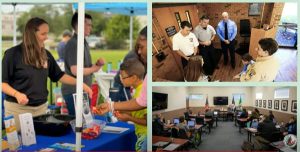
Substance Abuse has also been an issue in the community. MHDS has expanded its mobile services and created a program providing comprehensive family support for pregnant and parenting mothers who are working to overcome substance abuse disorders. Henrico has also partnered with St. Joseph’s Villa to create the Youth Regional Crisis Receiving Center and implemented the Community Service Art Project that allows teens in our justice system to express themselves and find hidden talents through painting. This project has resulted in three beautiful murals.
Cari stated, “It serves as a daily reminder of what we can accomplish when we believe in our youth and give them opportunities to grow.”
Speaking of youth, Cari proudly remarked on the inaugural Team Summit RVA, a regional event organized by our very own Deputy County Manager Monica Callahan, where more than 540 students attended and learned about jobs and community resources and were given a platform to be heard.
She also congratulated the County’s Internship Program for receiving a “Top Employer for Interns in Virginia” Award from the Governor. She ultimately closed her speech by noting that the County Manager started his career as an intern and that “Henrico and this region continue to benefit from the opportunity [the County Manager] was given.”
Finally, the County Manager took the stage to close out the program. “Like I said in the beginning, you know Henrico County is not a locality where we can come out and show a year’s worth of work in fifteen minutes. I certainly hope we never get to that point. I am so proud of the staff, and I’m so thankful to the Board of Supervisors and the School Board for the opportunities… you continue to give us… I believe the best days are ahead of us.”
You can watch the full address on the Henrico County Government YouTube Channel.

Read More

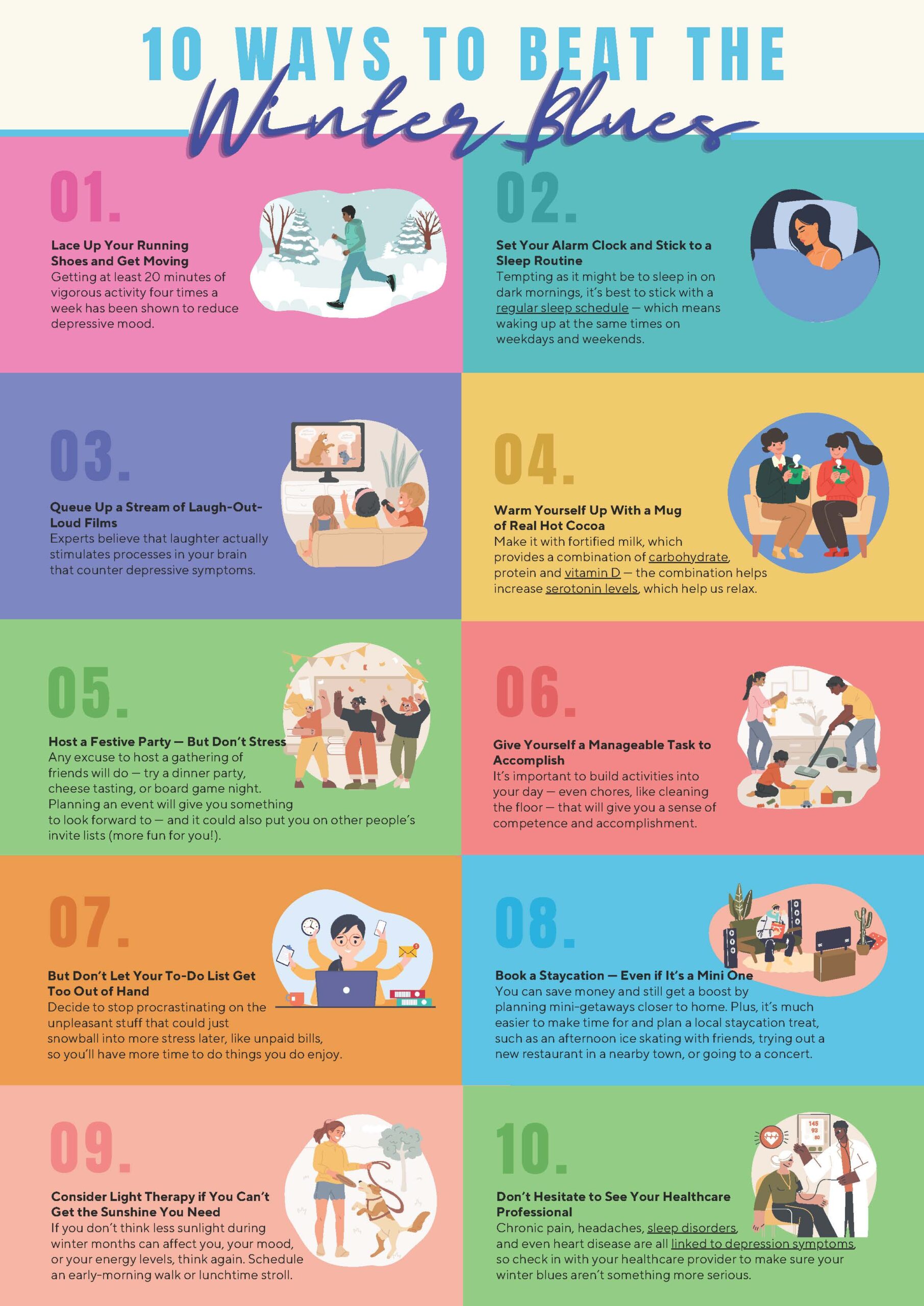

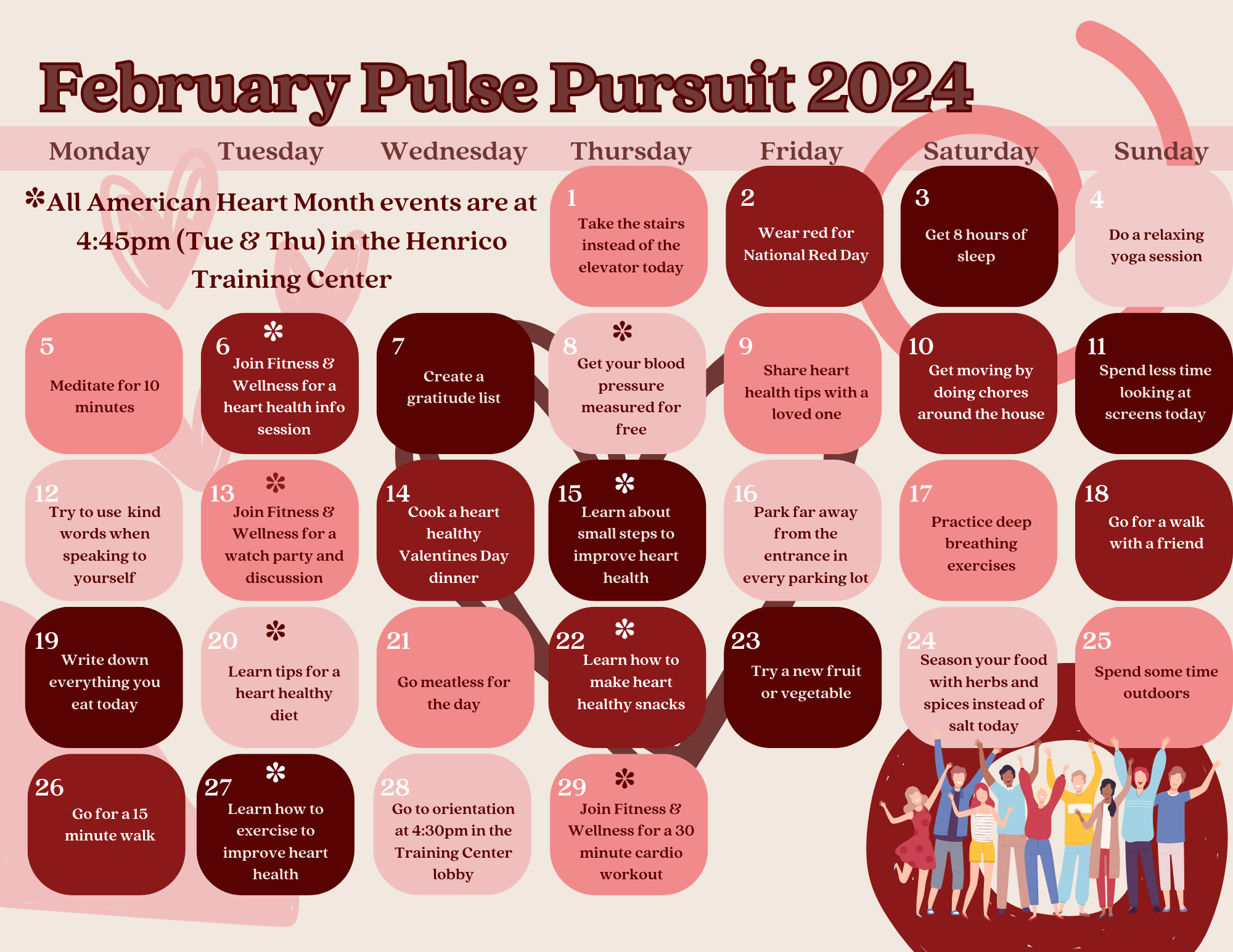
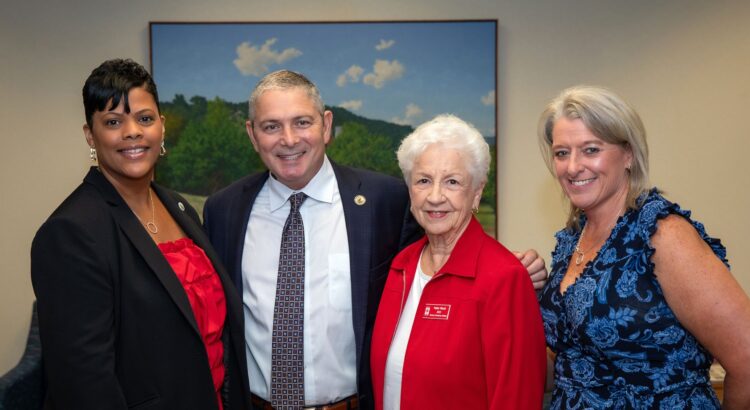

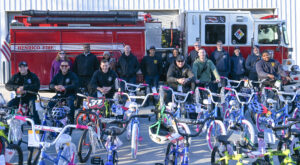
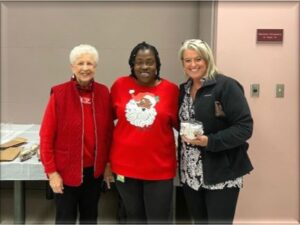



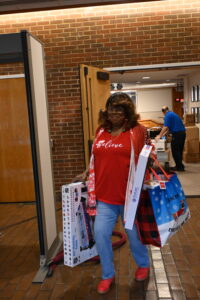
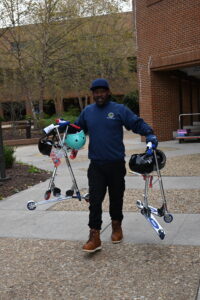


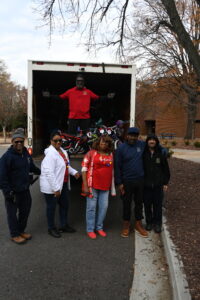


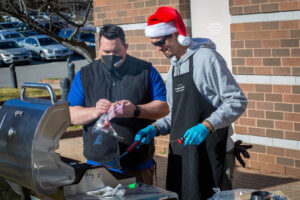






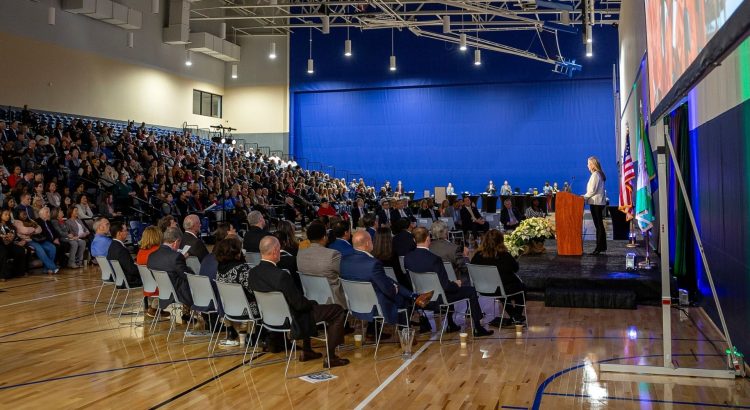
 After a musical introduction by the Henrico High School marching band, the County Manager thanked the current Board of Supervisors for their hard work, with special mention to Patricia O’Bannon and Frank Thornton, who are both retiring after 28 years on the Board. He also thanked Tommy Brannon for his eight years on the Board and welcomed the recently elected members: Jody Rogish (Tuckahoe), Roscoe Cooper (Fairfield), and Misty Whitehead (Three Chopt).
After a musical introduction by the Henrico High School marching band, the County Manager thanked the current Board of Supervisors for their hard work, with special mention to Patricia O’Bannon and Frank Thornton, who are both retiring after 28 years on the Board. He also thanked Tommy Brannon for his eight years on the Board and welcomed the recently elected members: Jody Rogish (Tuckahoe), Roscoe Cooper (Fairfield), and Misty Whitehead (Three Chopt). current 401 capital projects, including the rebuilding and renovating of several elementary schools and the construction of a living Environmental Education building at Wilton Farm, 141 public works projects, the new Police Station that just broke ground in their South district, and Firehouse 23 that is currently under construction. He then gave a shout-out to Sheila Minor and Justin Crawford for creating a 20.1% growth rate in the annually compounded General Fund Balance since July 2020. He attributed the County’s success to steadfast and consistent leadership, incredible employees, businesses that have made Henrico home, and the secret ingredient: how we manage our finances. By investing in flexibility, we can manage economic downturns without raising taxes or employee layoffs. Instead, Henrico has invested in its employees, allowing them to receive, on average, a 32% increase in salary in the past two and a half years. Smart money management also permitted Henrico to provide tax relief to residents and to be the first locality in the state to take advantage of new state laws and give surplus real estate and personal property taxes back to taxpayers. Henrico also cut the already-lowest personal property tax by an additional ten cents. Brandon closed by discussing the RECap Program that will provide real estate tax relief for the qualifying Henrico property owners.
current 401 capital projects, including the rebuilding and renovating of several elementary schools and the construction of a living Environmental Education building at Wilton Farm, 141 public works projects, the new Police Station that just broke ground in their South district, and Firehouse 23 that is currently under construction. He then gave a shout-out to Sheila Minor and Justin Crawford for creating a 20.1% growth rate in the annually compounded General Fund Balance since July 2020. He attributed the County’s success to steadfast and consistent leadership, incredible employees, businesses that have made Henrico home, and the secret ingredient: how we manage our finances. By investing in flexibility, we can manage economic downturns without raising taxes or employee layoffs. Instead, Henrico has invested in its employees, allowing them to receive, on average, a 32% increase in salary in the past two and a half years. Smart money management also permitted Henrico to provide tax relief to residents and to be the first locality in the state to take advantage of new state laws and give surplus real estate and personal property taxes back to taxpayers. Henrico also cut the already-lowest personal property tax by an additional ten cents. Brandon closed by discussing the RECap Program that will provide real estate tax relief for the qualifying Henrico property owners. Anthony Romanello, Executive Director of the Economic Development Authority, was next on the mic and opened by stating that the County’s finances are so strong because its economy is so strong. In fact, it is the fourth strongest economy in the state and second for jobs. This is made possible by public-private partnerships and $2.5 billion in private investments such as Amazon. Richmond International Airport in Henrico being named the most efficient airport in North America also helps! Henrico isn’t just about the billions in investments but also the people and working with businesses of all sizes. The Small Business Development Center helped 225 businesses in the last year. Anthony closed out by discussing future projects such as the Willow Lawn remodel and Green City.
Anthony Romanello, Executive Director of the Economic Development Authority, was next on the mic and opened by stating that the County’s finances are so strong because its economy is so strong. In fact, it is the fourth strongest economy in the state and second for jobs. This is made possible by public-private partnerships and $2.5 billion in private investments such as Amazon. Richmond International Airport in Henrico being named the most efficient airport in North America also helps! Henrico isn’t just about the billions in investments but also the people and working with businesses of all sizes. The Small Business Development Center helped 225 businesses in the last year. Anthony closed out by discussing future projects such as the Willow Lawn remodel and Green City. Dennis then passed the ball to Terrell Hughes, Director of Public Works, to discuss infrastructure efforts to improve quality of life and secure a long-term future for residents. He started with the Fall Line project that broke ground in October and will add 14 miles of bike lanes and connect to the Capital Trail. There are also 120 transportation projects in the works, most of which are adding sidewalks and pedestrian safety. Through the partnership with the Greater Richmond Transit Commission (GRTC), there are projects to expand bus routes and add bus stop enhancements. Along with transportation, water and internet have been big priorities, especially in the more rural parts of the County. Henrico has been proactively replacing underground sewer and water lines, connected 30 houses to County water that were previously on wells, and soon 100% of County residents will have broadband access. There have been multiple drainage and Wastewater facility improvements. The Westwood pump station is being designed, water and sewer is expanding to southeast Henrico, and the Cobbs Creek Reservoir is nearly completed, which will secure the County’s drinking water for the next 50 years. As far as road projects go, several rural roads have been expanded, and roundabouts have been added throughout the County. Next year, the County can look forward to the building of the Magellan Parkways and a new bridge over I95, Saddler Road widening, utility work at Three Chopt Road, and I64 Highway improvements near Short Pump.
Dennis then passed the ball to Terrell Hughes, Director of Public Works, to discuss infrastructure efforts to improve quality of life and secure a long-term future for residents. He started with the Fall Line project that broke ground in October and will add 14 miles of bike lanes and connect to the Capital Trail. There are also 120 transportation projects in the works, most of which are adding sidewalks and pedestrian safety. Through the partnership with the Greater Richmond Transit Commission (GRTC), there are projects to expand bus routes and add bus stop enhancements. Along with transportation, water and internet have been big priorities, especially in the more rural parts of the County. Henrico has been proactively replacing underground sewer and water lines, connected 30 houses to County water that were previously on wells, and soon 100% of County residents will have broadband access. There have been multiple drainage and Wastewater facility improvements. The Westwood pump station is being designed, water and sewer is expanding to southeast Henrico, and the Cobbs Creek Reservoir is nearly completed, which will secure the County’s drinking water for the next 50 years. As far as road projects go, several rural roads have been expanded, and roundabouts have been added throughout the County. Next year, the County can look forward to the building of the Magellan Parkways and a new bridge over I95, Saddler Road widening, utility work at Three Chopt Road, and I64 Highway improvements near Short Pump. been an uptick in the number of people living out of hotels, couch surfing, or unsheltered. To combat the lack of supply of homes, Henrico is constructing Cool Lane Commons, an 86-unit apartment building for people without housing; helped Housing Families First expand their family shelter; and cultivating partnerships to provide greater levels of housing affordability, including five current memorandums of understanding (MOUs) which represents about 1,000 units. Creating the Hotel to Home program has helped people living in hotels move into permanent housing. This initiative came from the hotel task force, which involved working with the Police Division, the Division of Fire, Mental Health and Developmental Services, Building Inspections, the Health Department, the County Attorney’s Office, and the Commonwealth’s Attorney’s Office. Joe Emerson and the planning team have created tools, zoning ordinances, and a fast-track approval process to help the building process. Henrico also partnered with the broader development community to bring units online faster and on a larger scale to meet the growing affordable housing needs such as Arcadia and River East. It isn’t just about providing housing, but also the maintenance and upkeep of current housing. There are partnerships through Project Homes and Richmond Habitat that, on average, support 70 homeowners annually. Community Revitalization and Building Inspections partnered to assist the residents of Glenwood Farms in improving their conditions. Affordability has been another major issue when it comes to housing. Considering this, Henrico is rolling out the Employee Home Purchase Assistance Program (EHPAP) to provide down-payment and closing cost assistance to employees purchasing their first home in Henrico County.
been an uptick in the number of people living out of hotels, couch surfing, or unsheltered. To combat the lack of supply of homes, Henrico is constructing Cool Lane Commons, an 86-unit apartment building for people without housing; helped Housing Families First expand their family shelter; and cultivating partnerships to provide greater levels of housing affordability, including five current memorandums of understanding (MOUs) which represents about 1,000 units. Creating the Hotel to Home program has helped people living in hotels move into permanent housing. This initiative came from the hotel task force, which involved working with the Police Division, the Division of Fire, Mental Health and Developmental Services, Building Inspections, the Health Department, the County Attorney’s Office, and the Commonwealth’s Attorney’s Office. Joe Emerson and the planning team have created tools, zoning ordinances, and a fast-track approval process to help the building process. Henrico also partnered with the broader development community to bring units online faster and on a larger scale to meet the growing affordable housing needs such as Arcadia and River East. It isn’t just about providing housing, but also the maintenance and upkeep of current housing. There are partnerships through Project Homes and Richmond Habitat that, on average, support 70 homeowners annually. Community Revitalization and Building Inspections partnered to assist the residents of Glenwood Farms in improving their conditions. Affordability has been another major issue when it comes to housing. Considering this, Henrico is rolling out the Employee Home Purchase Assistance Program (EHPAP) to provide down-payment and closing cost assistance to employees purchasing their first home in Henrico County. final presenter. She discussed the Encore program created by Yvette George, Director of Human Resources, that allows retirees to come back to work part-time. The program has seen success in the Division of Fire and with the newly created Emergency Communications Division, which increased staffing by 38%. The introduction of eight weeks of parental leave is also an added benefit for employees. Cari went on to say, “We need great employees in public safety because Henrico isn’t immune to the challenges we face as a nation. Gun violence, particularly involving our youth, has dramatically increased, and so have our struggles with mental health, our Justice and medical systems are stressed like never before, but as a county, we’re meeting the challenges with teamwork and swift action.” By the end of 2023, officers removed more than 900 guns from the street. Multi-agency teams of first responders and human services professionals, such as the Star Team, the Care Team, and the Crisis Response Teams, have been instrumental in getting residents the care they need. The Mental Health Docket, which diverts individuals from jail to get treatment, has seen a 96% graduation rate, meaning the individual got a job and the treatment they needed and was reunited with family.
final presenter. She discussed the Encore program created by Yvette George, Director of Human Resources, that allows retirees to come back to work part-time. The program has seen success in the Division of Fire and with the newly created Emergency Communications Division, which increased staffing by 38%. The introduction of eight weeks of parental leave is also an added benefit for employees. Cari went on to say, “We need great employees in public safety because Henrico isn’t immune to the challenges we face as a nation. Gun violence, particularly involving our youth, has dramatically increased, and so have our struggles with mental health, our Justice and medical systems are stressed like never before, but as a county, we’re meeting the challenges with teamwork and swift action.” By the end of 2023, officers removed more than 900 guns from the street. Multi-agency teams of first responders and human services professionals, such as the Star Team, the Care Team, and the Crisis Response Teams, have been instrumental in getting residents the care they need. The Mental Health Docket, which diverts individuals from jail to get treatment, has seen a 96% graduation rate, meaning the individual got a job and the treatment they needed and was reunited with family.




